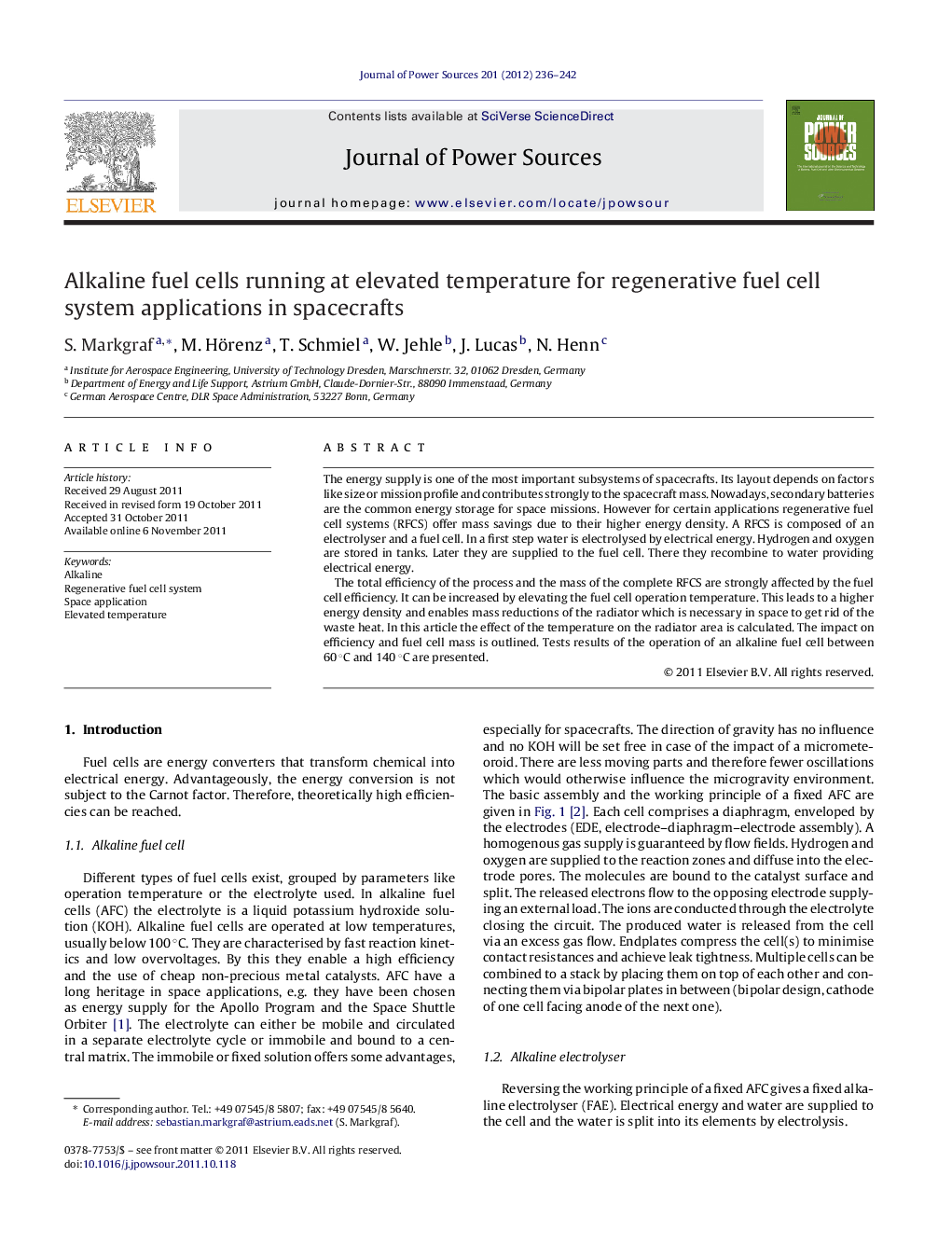| Article ID | Journal | Published Year | Pages | File Type |
|---|---|---|---|---|
| 1293196 | Journal of Power Sources | 2012 | 7 Pages |
The energy supply is one of the most important subsystems of spacecrafts. Its layout depends on factors like size or mission profile and contributes strongly to the spacecraft mass. Nowadays, secondary batteries are the common energy storage for space missions. However for certain applications regenerative fuel cell systems (RFCS) offer mass savings due to their higher energy density. A RFCS is composed of an electrolyser and a fuel cell. In a first step water is electrolysed by electrical energy. Hydrogen and oxygen are stored in tanks. Later they are supplied to the fuel cell. There they recombine to water providing electrical energy.The total efficiency of the process and the mass of the complete RFCS are strongly affected by the fuel cell efficiency. It can be increased by elevating the fuel cell operation temperature. This leads to a higher energy density and enables mass reductions of the radiator which is necessary in space to get rid of the waste heat. In this article the effect of the temperature on the radiator area is calculated. The impact on efficiency and fuel cell mass is outlined. Tests results of the operation of an alkaline fuel cell between 60 °C and 140 °C are presented.
► Benefits of regenerative fuel cell systems for space applications summarised. ► Influence of higher temperature on performance of alkaline fuel cell described. ► Influence of higher temperature on system mass of fuel cell system calculated. ► Test facility for tests of an alkaline fuel cell up to 140 °C assembled. ► Cell performance increased drastically at higher temperature, mass savings possible.
